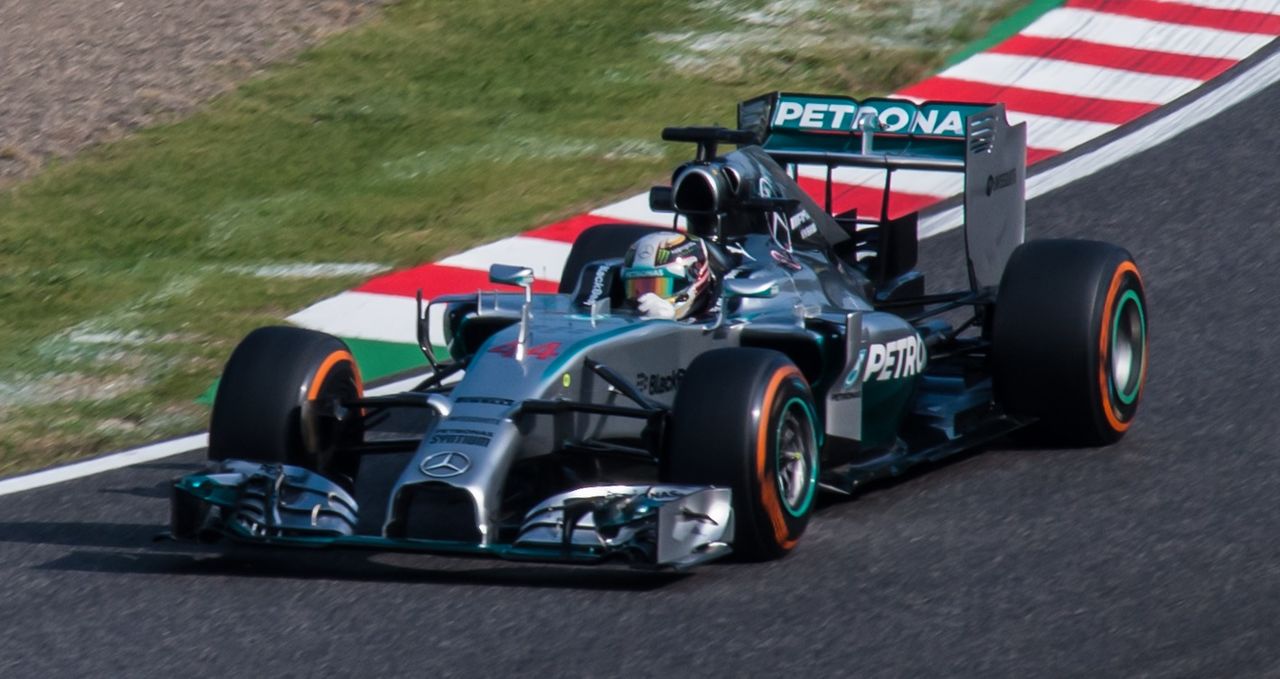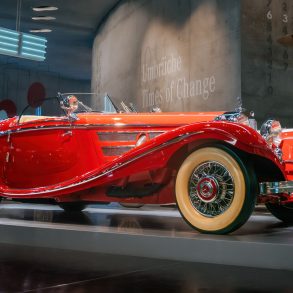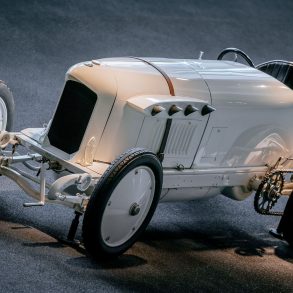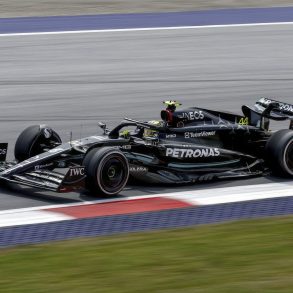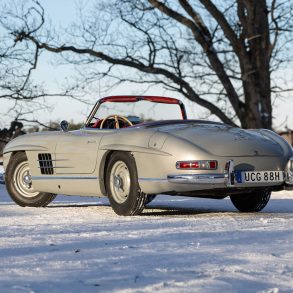Mercedes F1 W05 Hybrid
Car: Mercedes F1 W05 Hybrid / Engine: 1.6 L Mercedes-Benz PU106A Hybrid V6 turbocharged engine, limited to 15,000 RPM / Maker: McLaren / Bore X Stroke: 80 mm x 53 mm / Year: 2014 / Capacity: 1,600 cc; 98 cu in / Class: Formula 1 / Power: 800–850 horsepower / Wheelbase: 4800 mm (Overall Length) / Track: 1800 mm (Overall Width) / Weight: 691 kg (1,523 lb)
The 2014 Formula One season marked one of the biggest change in regulations in the sports history and the W05 is the answer to the changes from Mercedes.
The initial engineering conversations between the Formula 1 team at Brackley and the Mercedes-Benz Technology Centre in Brixworth where the engines are made around both the regulations and potential solutions date back to late 2010. Since mid-2011, when the rules for the new V6 Hybrid Power Unit were officially published, Mercedes-Benz claims that it has taken a fully integrated approach to every major performance decision with a clear-sighted focus on maximizing overall car performance.
The result is the new F1 W05 and at its heart, the PU106A Hybrid Power Unit, both designed to meet the challenge of a fundamental change in the philosophy of Formula One. The introduction of a demanding maximum race fuel allowance of just 100 kg per race, coupled with a maximum fuel flow rate of 100 kg/hour, have focused the efforts of the sport’s engineers on delivering performance with a set of innovative new technologies that achieve an efficiency gain of more than 30%. This is quite an astounding figure that’s been lost in complaint about the “spectacle” and more specifically the sound that the cars produce. “
From a technical and also a racing perspective, this is an incredibly exciting time for Formula One”
Technical Director Paddy Lowe explained.
We are introducing technologies that are new not just to racing but to the wider automotive world as well. The headline is that of improved efficiency and the fact that we will be completing races with advanced Hybrid systems on just 100 kg of fuel sends a great message about the technology that Formula One can deliver. But it is also about the technology that Mercedes-Benz can develop compared with our competition, both for the chassis and the new Power Unit.
In the new jargon of Formula 1 engines have become power units. As exclusively revealed in the latest issue of Racecar Engineering where Peter Wright observes “Mercedes has split the compressor from the turbine, locating the former at the front of the engine and the latter at the rear. In between, mounted in the V, is the MGU-H being driven/driving the turbine and compressor via shafts. This arrangement allows all the cold parts and charge-air ducts to be mounted forward and the hot parts at the rear.” What Write noted has on further inspection provided many interrelated benefits.
As noted by others:
As the air is not traveling through as much pipe work, a reduction in turbo lag means less power needs to be be harvested from the car’s ERS unit to keep the turbine spooled off throttle. That in turn improves the efficiency of the car, with more power reserved for performance gain and less fuel consequentially used up.
- With the compressor further away from the turbine – which is spun by hot exhaust gases – the W05 has a smaller intercooler, meaning Mercedes are running with smaller sidepods which boost aerodynamic performance.
- Furthermore, with the compressor in front of the engine, Mercedes have also moved their car’s gearbox forward, improving its centre of gravity and therefore, in theory, its handling.
Motorsports’s Mark Hughes in his technical analysis notes that
“Its impact is maybe not quite as big as active-ride, but it’s certainly a major technical advantage that they’ve engineered themselves for the rest of the season.”
Other changes to the regulations impose a narrower front wing; the removal of the lower rear wing and a reduction in size of the upper wing; and a central exhaust exit, thereby negating the effect of ´exhaust blowing´ over the diffuser which contributed to performance in the past three seasons. Starting at the front of the car the Mercedes nose is perhaps the most conventional looking and perhaps least objection al amongst the current crop of cars. The rear suspension of the car is once again a pullrod layout similar to the W05. Red Bull boss Christian Horner claimed in Malaysia that his team was one second slower along the straights, with track side observers estimating that the Mercedes unit boasts anything between 50 and 70 extra horsepower over the rest of the field. Of course this would also allow Mercedes to dial in more downforce if they chose to do so.
To make matters only worse for the other teams the engines for 2014 were in lock-down, with February 28 marking the agreed homologation date by which all the teams had to register their design for the new season with the governing body, the FIA.

Felipe Massa ended Mercedes’ streak of pole positions during qualifying for the Austrian Grand Prix Ironically the Williams was also powered by Mercedes. By the end of the season the Williams duo of Massa and Valtteri Bottas would prove their stiffest competition. It was only the season long battle between teammates Nico Rosberg and Lewis Hamilton and some reliability issues that saved the season from being a procession.
At the Russian Grand Prix, Mercedes clinched their first Constructors’ Championship after yet another 1–2 finish. They locked out the front row out for the fifth successive race and Hamilton won comfortably by 13 seconds from Rosberg who even with a first lap incident and a unscheduled pit stop was able to motor through the field as if the other cars were in another race.
At the Brazilian Grand Prix Rosberg and Hamilton finished 1–2 for a record 11th time, beating McLaren’s 26-year-old record of 10. Rosberg cut the gap to Hamilton down to 17 points going into the season finale in Abu Dhabi. Ridiculously, a new hopefully short-lived rule had been instituted to award double points for the season’s final. Rosberg was on pole but in the race, Hamilton moved ahead of Rosberg at the start and controlled the race throughout. Rosberg suffered an ERS failure midway through the race and could only manage 14th position, while Hamilton won his 11th race of the season and with it the World Championship. Rosberg was advised by the team to park the car but gallantly chose to soldier on and after the race congratulated his fierce rival.


